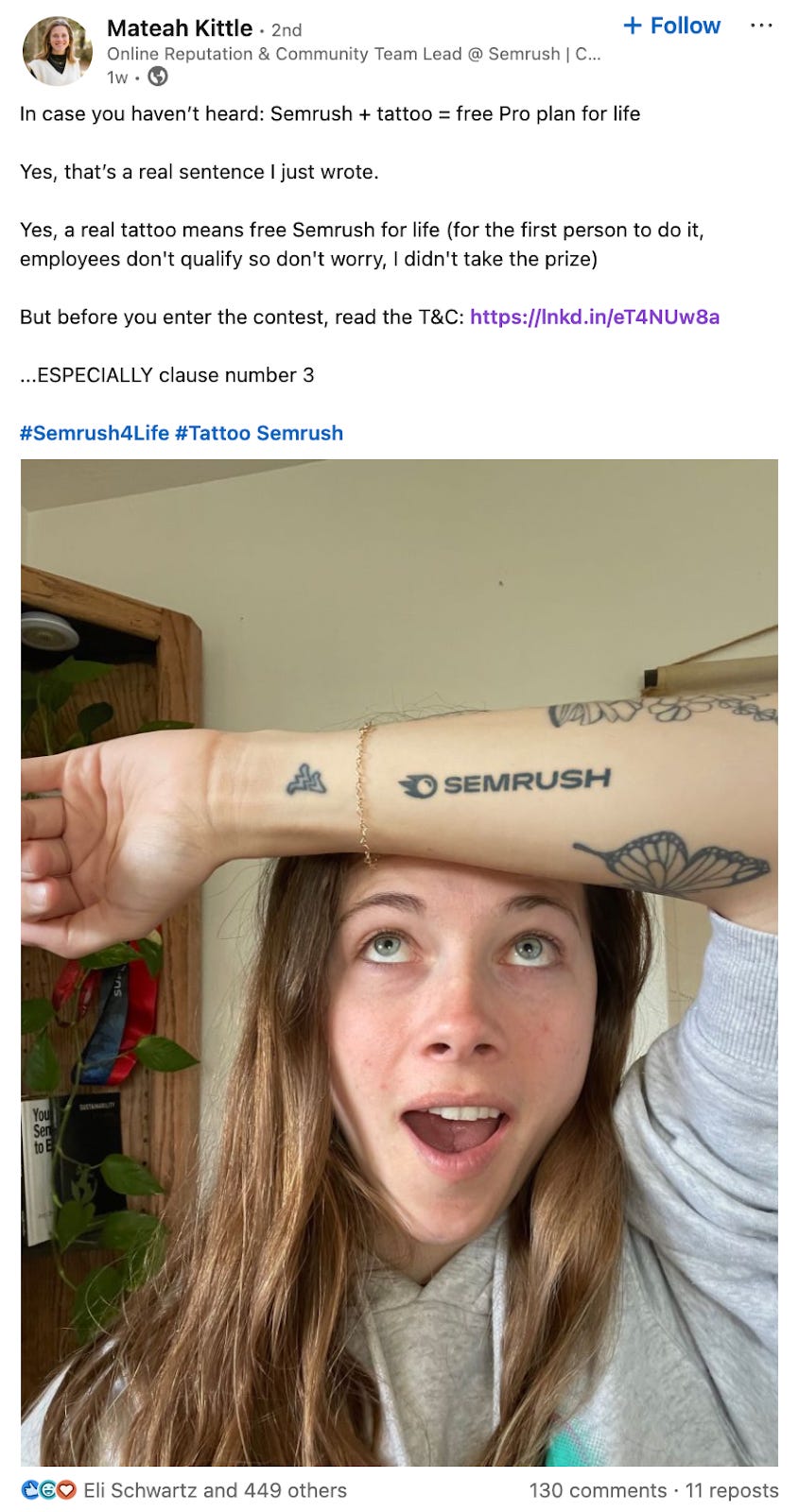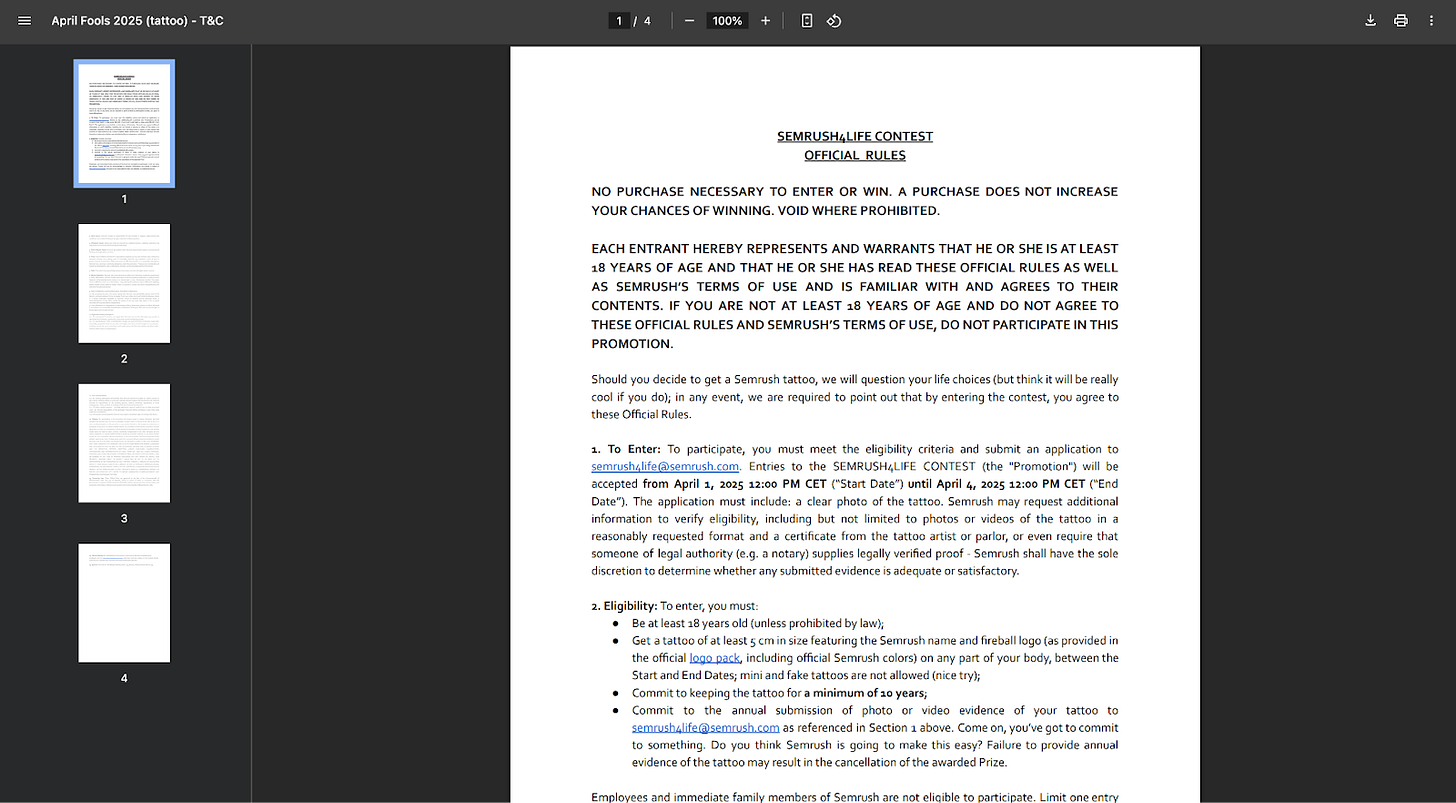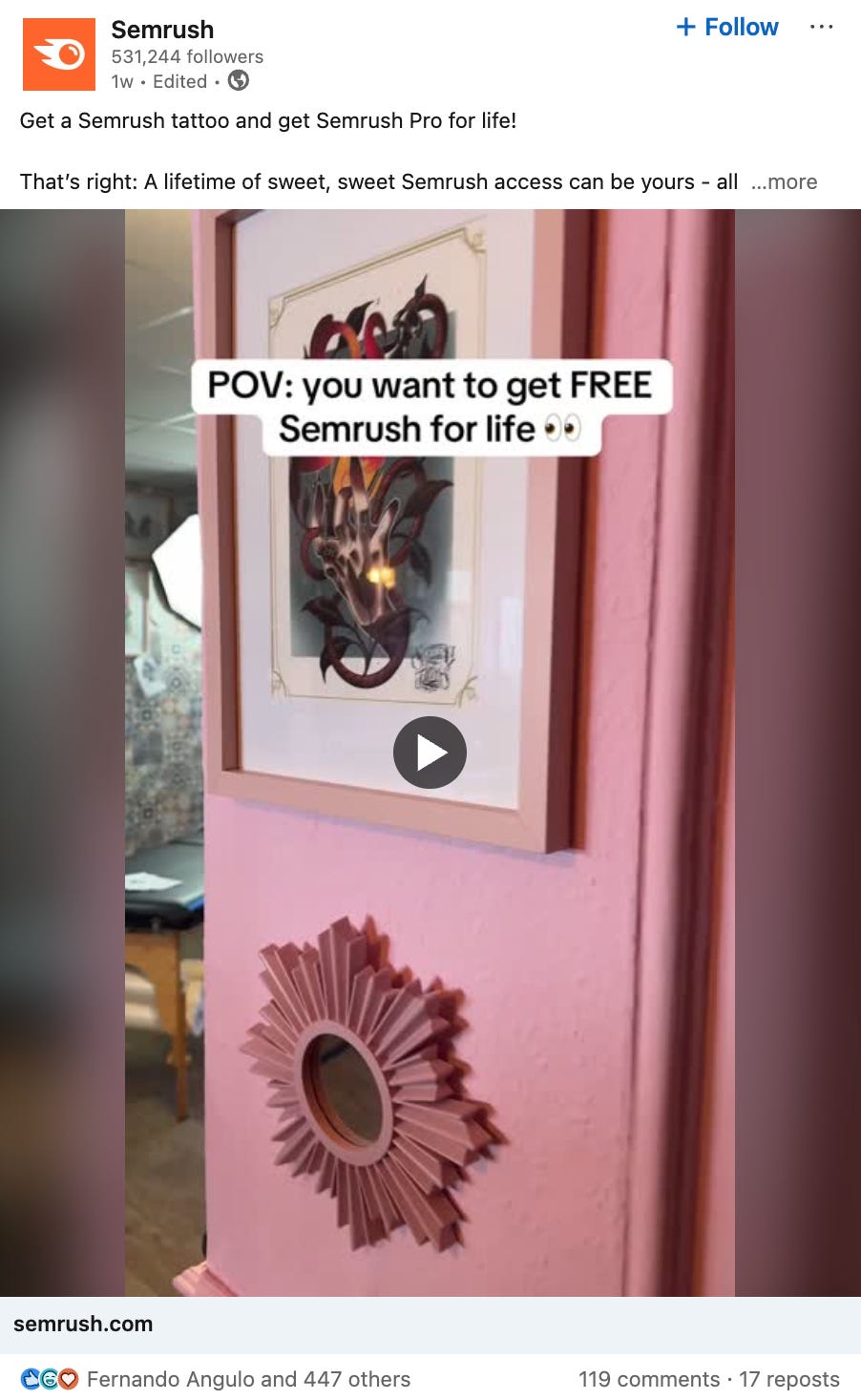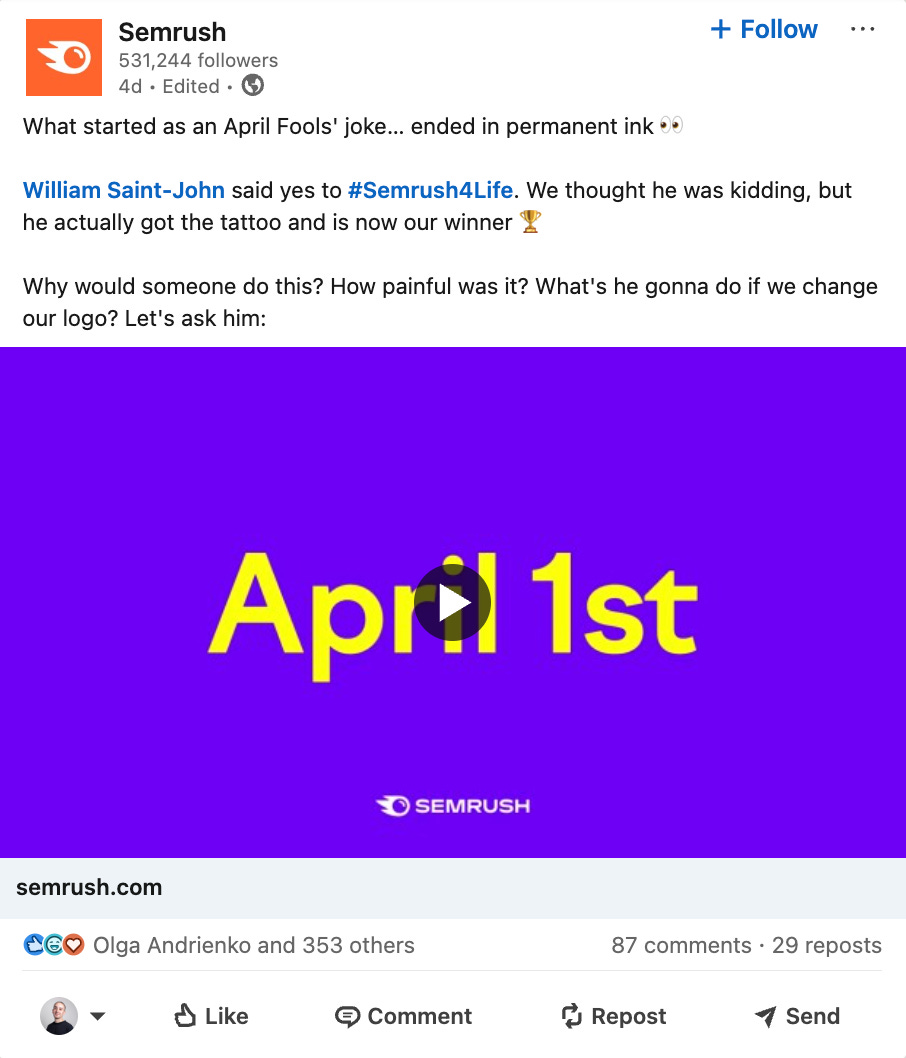Did they really do that?
What a tattoo contest can teach us about B2B brand building
👋 Hey, I’m George Chasiotis. Welcome to GrowthWaves, your weekly dose of B2B growth insights—featuring powerful case studies, emerging trends, and unconventional strategies you won’t find anywhere else.
This GrowthWaves note is brought to you by AirOps.
We’ve used AirOps at Minuttia, which is why I’m not recommending this blindly.
Their team is sharp, fast, and always ahead of the curve when it comes to AI in marketing.
Now, they’re running a new cohort to teach marketing operators how to use AI meaningfully in their jobs.
Not the fluffy stuff, but real use cases: workflows, automations, prompts, and systems that save hours and drive results.
If you’re a B2B marketer, strategist, or founder who wants to stop playing catch-up with AI and start using it effectively to drive results, this is worth checking out.
The next cohort begins on May 12th. Seats are limited.
A few days ago, I was browsing LinkedIn when I saw a scroll-stopping post.
“Wait a minute, did they really do that?” I asked.
A few clicks later, I got the answer.
They did, and it turned out well.
Enough with the mystery.
Let’s get into it.
Context
First things first.
“They” refers to SEMrush.
I’ve covered SEMrush a few times on GrowthWaves for their acquisition playbook and LinkedIn strategy.
But this time, they took things to a whole new level.
Here’s the post I referred to in the introduction:

Check out the engagement on this post:
450 engagements
130 comments
11 reposts
Not bad, right? Especially by current LinkedIn organic standards.
I checked the T&C mentioned in the post, and besides the pretty loose (and borderline dangerous) legalese, it seems somewhat legit.

Next, I checked SEMrush’s LinkedIn page. It turns out that the post and the T&C referred to a contest the company ran as an April Fool’s Day joke. Here’s the initial post:

Here’s some high-level information about the contest:
The contest was called SEMrush4Life
It started as an April’s Fool joke
After ~1 week, there was a winner
Okay, so far so good.
Why am I writing about tattoos in a publication focused on B2B marketing and growth?
Let’s see why SEMrush’s move here matters more than most of the super sophisticated data studies you read and use for benchmarking.
The outcome
About one week after the announcement, the SEMrush team identified the person tagged in the post below as the winner.

In this video, the winner explains why they participated in the contest and what getting that tattoo means to them.
But why is that important?
Let’s start with what getting a tattoo means.
Getting a tattoo = A commitment that lasts forever
(Or, at least until you decide to remove it, which will be ugly and painful.)
So, what’s the connotation people make when they see someone getting a tattoo with a brand’s name on their body?
This is a brand that will stay forever.
And that’s exactly what this play is about.
Positioning SEMrush as a brand that will stay with you forever.
Even the hashtag (yeah, they’re still a thing), SEMrush used here, is strategically chosen to reinforce the brand message:
#semrush4life
Just take a look at the responses of people using that hashtag.
That’s how you build brand loyalty, let alone separate yourself from the rest of the pack.
Now, to be clear:
I’m not advocating getting a tattoo to enter SEMrush’s competition or running something similar for your brand.
As I just explained, this contest has little to do with tattoos and everything to do with what tattoos represent.
At the same time, the contest’s prize is in the product’s currency, which is critical here.
Simply put, SEMrush didn’t choose to give away gadgets or Amazon coupons.
They selected something their customers—someone paying for the product—would value.
That way, they add value to the perception of SEMrush (the product) rather than just amplifying SEMrush (the brand).
Because think about it from the standpoint of a non-user:
“People are getting tattoos to get lifetime access to this product? It must be really good.”
All in all, the campaign achieves three objectives at once:
Brand visibility since hundreds of people talk about SEMrush (the brand) on LinkedIn
Brand loyalty since people associate SEMrush with something permanent, such as getting a tattoo
Increased product perceived value by using product currency as the contest’s prize
Here’s why this is important:
The B2B marketing playbook has been the same for several years.
Forgive me for saying it, but many marketers have been very comfortable for a very long time.
But the game has changed.
Companies like SEMrush practice the new B2B marketing playbook as they write it.
And I know what you’ll say:
“Yeah, but they’re a big brand. They have all these resources. They can afford to do that stuff.”
Fair enough.
But have you considered that the reason they’re a big brand may be precisely because they do these things?
Sure, it’s easy to do podcasts and even organize conferences when you get to their level, but pulling off something like this isn’t as simple.
Let’s bring this to a close.
Final thoughts
I genuinely like seeing things like this on my LinkedIn feed.
It makes me feel that I made the right decision years back when I chose B2B marketing as my thing.
And I think that—to a certain extent, and in different shapes or forms—most companies can try to be more creative with their marketing and growth efforts.
See you next week!
Disclaimer: This post is for illustrative and educational purposes only. I’m not encouraging anyone to get a tattoo—especially not for marketing campaigns or contest prizes. Please don’t make permanent decisions based on a LinkedIn post. Think twice, then think again. Stay safe (and ink responsibly).



